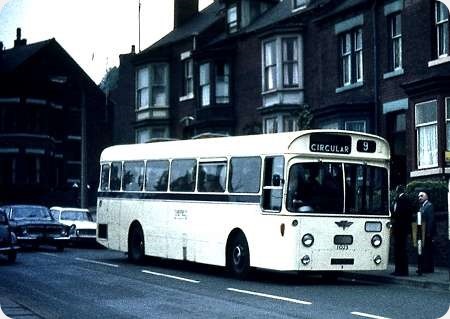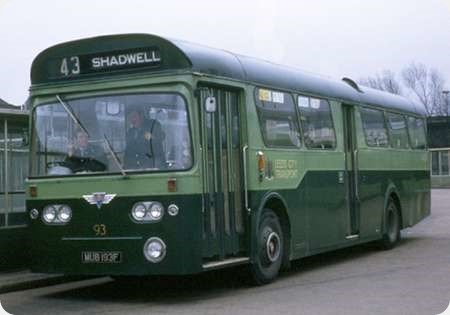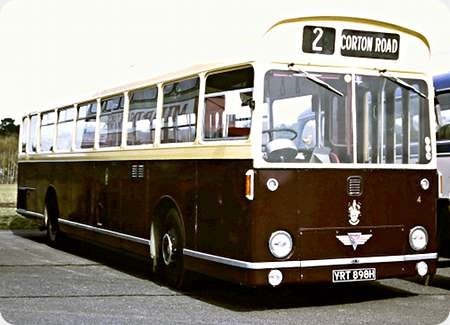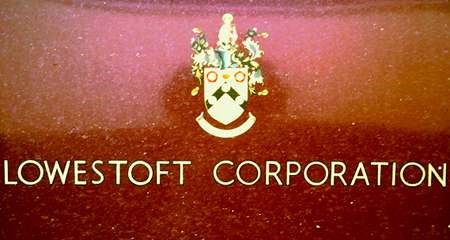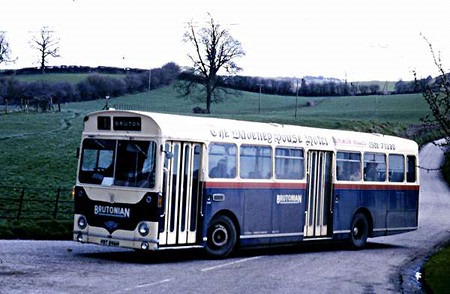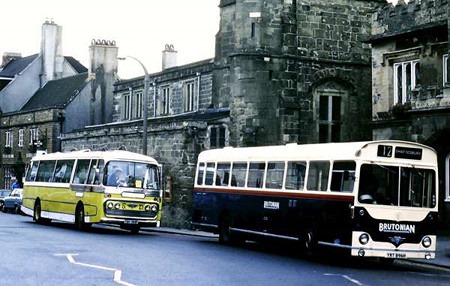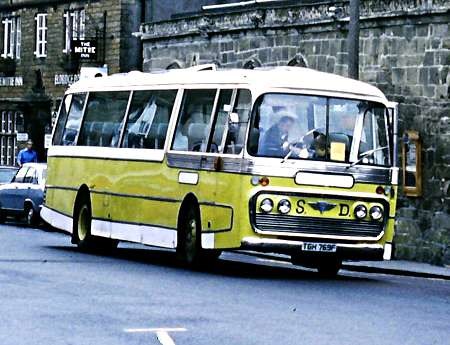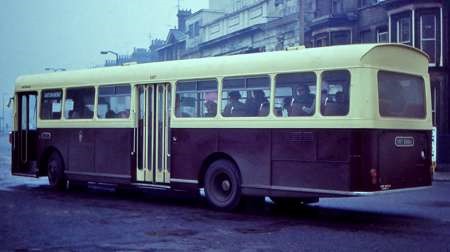Sheffield Corporation – AEC Swift – TWE 123F – 1023
Sheffield Corporation
1968
AEC Swift 2P2R
Park Royal B53F
Sheffield took delivery of two batches of AEC Swifts in 1968. The 2P2R type was fitted with the AH691 engine, ideal for the Sheffield hills. The first 11 buses were single doorway for the Joint Committee B fleet as shown here. These buses were initially put to work on the Inner Circle services 8 and 9 despite these being category A services. 1023 is seen here so employed when just a few weeks old at Hunters Bar. The Inner Circle routes took one hour for a round trip serving the older and inner parts of the City. The small window beneath the nearside windscreen had a roller blind behind which could be set to either blank (as here) or Please Pay as you Enter as appropriate.
Photograph and Copy contributed by Ian Wild
29/06/20 – 06:21
Who knows? I could have been lurking within 1023. I was a pupil of King Edward VII School on Newbold Lane from 1964-1971 and these were my regular mode of transport to and from school from 1968. Fast and smooth but, in retrospect, not the equal of the RE. Ironic that, shortly afterwards, an order for the superb RE was changed for the flawed VRT.
David Oldfield
15/07/20 – 06:45
I think you and I spent many a happy hour waitiog for these Swifts and before that – whatever could be mustered from East Bank Road depot at that time in the morning, be it a 30ft long AEC Regent V with Weymann, Alexander or Roe bodywork, a PD3, Atlantean, Fleetline or even somethingg older. What a splendid mix was the Sheffield fleet right up to the 1970s.
The Swifts had a hard life climbing up and down the ferocious hills of the Steel City to Lodge Moor, Gleadless, Upperthorpe, Walkley and, as here, on the Inner Circle. Of course they never looked as good as this once taken over by the South Yorkshire PTE.
Philip Hanwell
17/07/20 – 07:33
Yes, it was a bit of a hotch potch just prior to the Swifts. Not sure about the B fleet Regents Vs or Fleetlines, but we certainly had the rest – and older. [Not to mention the fleet of almost retired Regent IIIs and PD2s used to ferry us to games at Trapp Lane and Castle Dyke.]
David Oldfield
Quick links to the - Comments Page - Contact Page - Home Page
